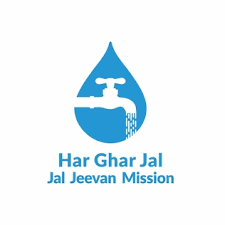Description

Disclaimer: Copyright infringement not intended.
Context
About the Government of India's Jal Jeevan Mission (JJM) - Har Ghar Jal.
Details
- The Government of India is implementing the Jal Jeevan Mission (JJM) - Har Ghar Jal in partnership with States.
- The mission aims to provide tap water supply to every rural household in the country.
- Water is a state subject, making the respective State/UT responsible for planning and implementing piped water supply schemes.
Progress of Tap Water Connections
- At the announcement of JJM in August 2019, only 3.23 Crore (17%) rural households had tap water connections.
- As of 17.07.2023, an additional 9.34 Crore rural households have been provided with tap water connections.
- Currently, out of 19.46 Crore rural households in the country, 12.57 Crore (64.61%) households have access to tap water supply.
States/UTs Achieving 100% Tap Water Connections
- As of 17.02.2023, several States and UTs have achieved 100% tap water connections in rural households.
- The States of Goa, Gujarat, Haryana, Punjab, Himachal Pradesh, and Telangana have accomplished this feat.
- The UTs of Andaman & Nicobar Islands, Dadra & Nagar Haveli and Daman & Diu, and Puducherry have also achieved 100% coverage.
- The remaining States/UTs have been advised to strive for complete coverage within the mission period.
Implementation and Planning
- The primary responsibility for planning and implementing piped water supply schemes lies with the respective State/UT.
- The Government of India's role is to support the States/UTs in achieving the mission's objectives.
|
PRACTICE QUESTION
Q)Consider the following statements about Jal Jeevan Mission (JJM) - Har Ghar Jal:
- The program is being implemented in partnership with states, and the primary responsibility for planning and implementing piped water supply schemes lies with the respective state or union territory (UT).
- Six states and three UTs have already achieved the target of providing tap water connections to all rural households.
Select the correct statement using the codes below:
(a) 1 only
(b) 2 only
(c) Both 1 and 2
(d) Neither 1 nor 2
Answer: C
|

https://pib.gov.in/PressReleasePage.aspx?PRID=1941119
















